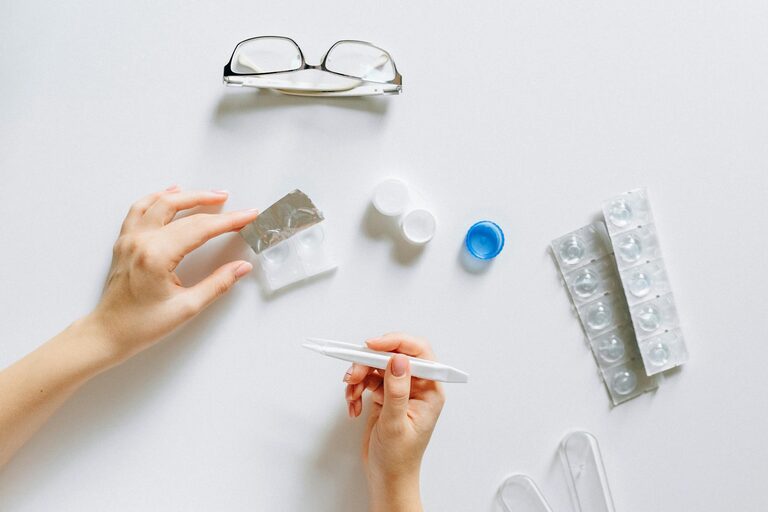In today’s digital world, many of us spend hours each day looking at screens—whether for work, study, or entertainment. This constant exposure can lead to eye discomfort, dryness, blurred vision, and headaches, commonly referred to as digital eye strain or computer vision syndrome. Fortunately, there are simple and practical steps you can take to protect your eyes and maintain healthy vision during screen time. In this post, we’ll explore why your eyes get tired and how to care for them effectively.
Why Screen Time Affects Your Eyes
When you focus on a screen for a long time, several things happen:
– You blink less often, which reduces moisture and causes dryness.
– Staring at bright light and flickering screens can cause discomfort.
– Constant focusing on a close object tires the eye muscles.
– Poor lighting and screen glare add extra strain.
Understanding these factors is the first step toward minimizing discomfort and protecting your vision over the long term.
Practical Tips to Protect Your Eyes
1. Follow the 20-20-20 Rule
One of the simplest and most effective habits is the 20-20-20 rule: every 20 minutes, look at something 20 feet away for at least 20 seconds. This practice helps relax your eye muscles and reduces fatigue.
2. Adjust Your Screen Settings
– Brightness: Match your screen brightness to the surrounding environment. Too bright or too dark screens force your eyes to work harder.
– Contrast: Increasing contrast can make text easier to read.
– Font Size: Use larger text to reduce eye strain, especially during long reading sessions.
– Color Temperature: Consider lowering blue light by adjusting the color temperature towards warmer tones, especially in the evening.
3. Maintain Proper Screen Distance and Position
Keep screens about an arm’s length away (20-30 inches) and position the top of the screen at or slightly below eye level. This setup helps reduce strain on your neck and eyes by promoting natural posture.
4. Use Good Lighting
Avoid working in overly bright or dim rooms. Use soft, ambient lighting to prevent glare and reflections on your screen. Position your screen to minimize window glare, or use anti-glare screen protectors if necessary.
5. Blink Regularly and Use Artificial Tears
Remember to blink often to keep your eyes moist. When you notice dryness or irritation, use lubricating eye drops to soothe your eyes. This is especially important in air-conditioned or dry environments.
6. Take Frequent Breaks
Besides the 20-20-20 rule, take longer breaks every hour. Stand up, stretch, and walk around to improve circulation and reduce overall fatigue.
7. Wear Computer Glasses
If you wear prescription glasses, consider lenses designed for digital screens. These may include features like anti-reflective coatings and blue light filtering to enhance comfort.
8. Regular Eye Exams
Visit an eye care professional regularly to check your vision and eye health. Early detection of vision problems can prevent worsening symptoms.
Creating a Comfortable Workspace
A well-designed workspace complements your eye protection efforts. Here are some ergonomic tips:
– Use adjustable chairs and desks.
– Ensure your screen is stable and positioned comfortably.
– Keep frequently used objects within reach to avoid repetitive strain.
– Maintain good posture to reduce neck and shoulder tension.
Lifestyle Habits to Support Eye Health
Eye protection doesn’t stop at screen habits. Supporting your overall eye health involves:
– Eating a balanced diet rich in eye-friendly nutrients like vitamin A, C, E, and omega-3 fatty acids.
– Staying hydrated to prevent dryness.
– Getting sufficient sleep for eye rest and repair.
– Wearing sunglasses outdoors to protect against UV rays.
Summary: Protect Your Eyes with Simple Habits
Spending time in front of screens is part of modern life, but it doesn’t mean your eyes have to suffer. By adopting habits such as the 20-20-20 rule, adjusting your workspace lighting, taking breaks, and caring for your overall eye health, you can reduce strain and keep your vision sharp. Remember, a little care goes a long way in protecting your eyes for the future.
Feel free to share your own tips or questions about eye care in the comments below!

